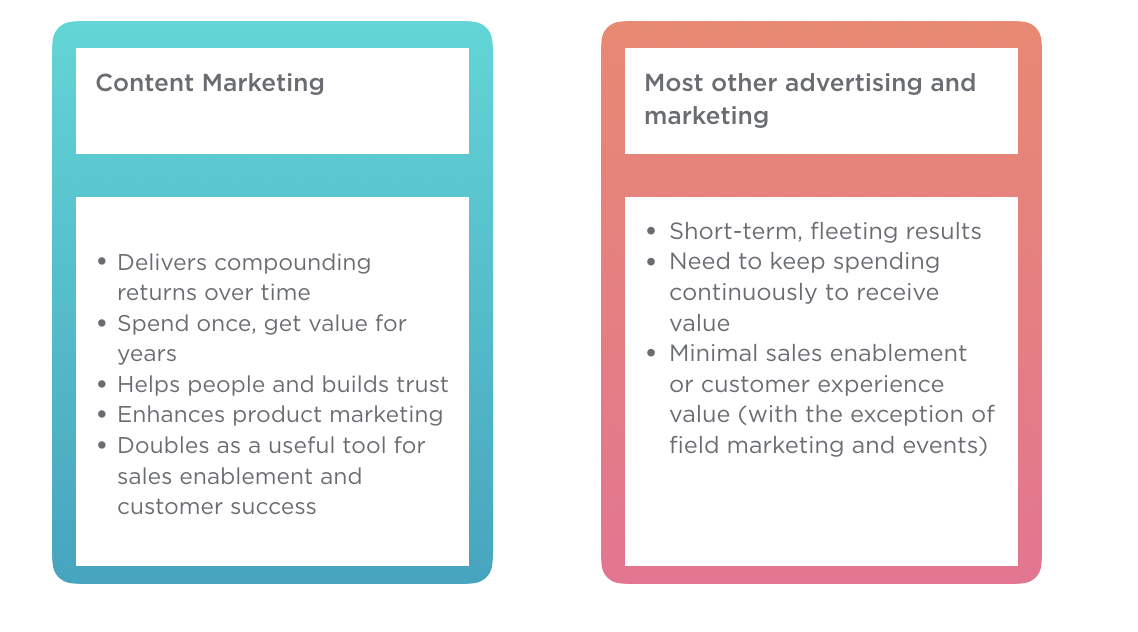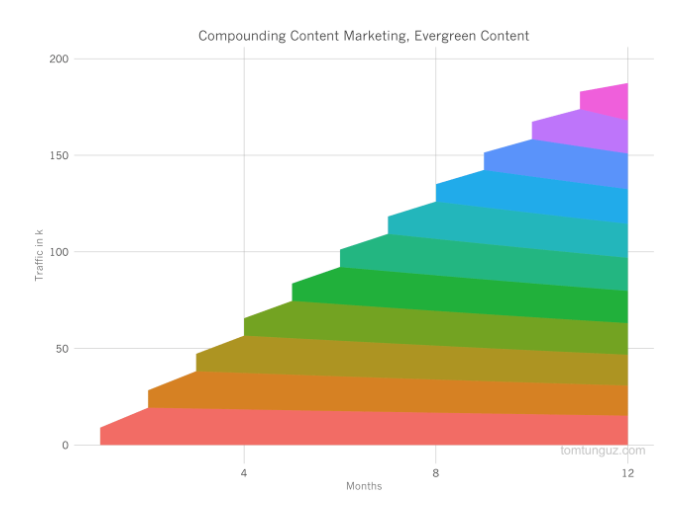ROI
How to Make the Case for Content Marketing in Uncertain Times
One of the toughest things to deal with right now is the uncertainty. We live in a world of conflicting projections—charts that loosely map the best- and worse-case scenarios for our work and personal lives as COVID-19 looms.
In the face of that uncertainty, companies are tightening their belts. A number of people have reached out to me asking for advice on how to protect their budget and make the case for content.
This is something I’ve been thinking about a lot. Like many other marketing leaders, I’ve mapped out potential budget cuts in case the economic fallout from COVID-19 is worse than expected. But we’re not cutting content; we’re doubling down on it. Given how the coronavirus has changed our jobs as marketers, there’s a good chance you should too.
The compounding returns of content
The biggest mistake people make with content marketing ROI is taking a short-term view. The vast majority of advertising and marketing is fleeting. Say you spend $500 on paid search ads today. You’ll get 25 clicks, but tomorrow, you’ll have to spend that money all over again to see any additional value.
Spend $500 on a helpful blog post optimized for search, and it’ll drive continuous traffic and leads while building trust with your audience. You’ll spend that $500 up front, but afterwards, high-quality content will continue to deliver results for free.

This is what Tomasz Tunguz calls the compounding returns of content marketing. When you create a high-quality piece of content, it delivers results not only on the first day it’s distributed via an email newsletter or social media, but also gradually over time as the results build on each other.

Take, for instance, this piece on how to write a white paper. We published it back in 2012, when Contently was five people hiding out in the corner of Google’s Chelsea Market office. It’s consistently generated 3,000 pageviews per month for the past 8 years and driven thousands of newsletter subscribers and leads. To get the equivalent results from a search ad for that topic, we’d have to spend millions of dollars.
This dynamic holds true for temporal/timely content as well. While the long-term returns fizzle out faster than with evergreen content, the initial traffic spike is often larger, and you still see compounding returns over time. We’ve seen this with a lot of our coverage of Facebook’s algorithm over the years—a big initial spike, and then a smaller long-term tail as it’s still shared over social and ranks for longer-tail search terms.

Why content marketing is the smartest investment you can make right now
There are a few reasons for this:
1. The demand for high-quality, helpful content has never been greater
I’ve never felt more urgency to create helpful content for our audience. Our customers and readers are facing new challenges—working remotely, adapting their content strategy, spinning up virtual events, communicating thoughtfully and sensitively with their audience.
Your audience is almost certainly looking for new answers too. As a marketer, think of yourself as in the business of public service. In financial services, your audience is urgently looking to you for financial advice. In telemedicine, there are critical questions you can answer for healthcare providers across the country. In B2B tech and services, you can help your audience figure out how to work in a whole new way.
We’re not cutting content; we’re doubling down on it.
There’s also a good chance they’re looking for content that has nothing to do with COVID-19. They’re simply spending a lot of time online right now and want to use it productively. Your content can simply entertain them, teach them a new skill, or help them stay mentally and physically fit.
Nudge, an analytics platform that tracks branded content performance around the web, found that attention time on content is up a whopping 39 percent over the past four weeks, compared with the same time period a year ago. Traffic to business, finance, and education sub-reddits is surging. Comscore has also seen a huge increase in usage across devices.
This is an incredibly important time for marketers to step up to the challenge. As you do, remember this mantra: Always be helpful, always be honest, never be opportunistic.
2. Content is the most logical place to reallocate event marketing and paid media budgets
The top two line items in most marketing budgets—events and paid media—are on hold for the foreseeable future. And since people are taking a wait-and-see approach on purchases across many sectors, advertisers are pulling back on media spend.
The logical move? Play the long game and reallocate those funds towards content, which is designed to build relationships and nurture leads. Once the economic landscape shifts in a couple of months, you’ll be set to hit the ground running and accelerate your business thanks to the connections and trust you’ve built.
The compounding returns of content means the investment you make now will keep delivering for you over time.
3. Content fuels virtual events
With in-person events suddenly canceled, brands are quickly shifting to virtual events. When the focus turns to the screen, strong content becomes more important than ever. Mediocre presentations can’t be propped up by great food, booze, and networking opportunities.
High-performing content published on your blog and social channels can easily be translated into virtual events. It’s a tactic that’s been extremely successful for us. We turned my LinkedIn series on the four elements of great storytelling into a webinar that got over 1,000 sign-ups almost immediately.
If you plan on pulling off successful virtual events in the coming months, it’ll be a lot easier if you can pull from a reservoir of timely content. Having a strong foundation of written, research, and video content allows us to create virtual events much faster. Heck, if this post does well, there’s a good chance we’ll turn it into a webinar too.
Content and connection
One of the best pieces I read recently was from Henk Campher of Hootsuite, who wrote that the best thing brands can do right now is “do good or make people feel good.”
As many of us sit in isolation, our need for connection has never been greater. And nothing makes humans feel more connected than a great story.
Those stories can be about the good you’re doing. GE Report’s breaking news coverage of how it’s helping the fight against COVID-19 has been astounding. Or they simply can make people feel good, and nothing makes people feel good like a heartwarming story. (Which is why I’m currently binge-watching Homeward Bound.)
We all need a sense of duty and purpose right now. And the best thing we can do for ourselves, our companies, and each other is to tell great stories.
Image by Visual GenerationGet better at your job right now.
Read our monthly newsletter to master content marketing. It’s made for marketers, creators, and everyone in between.




